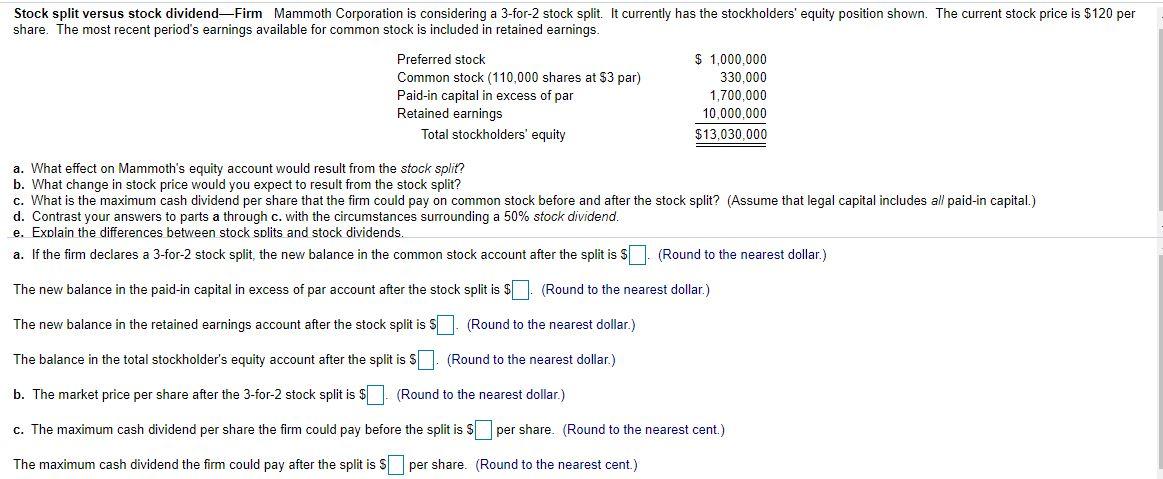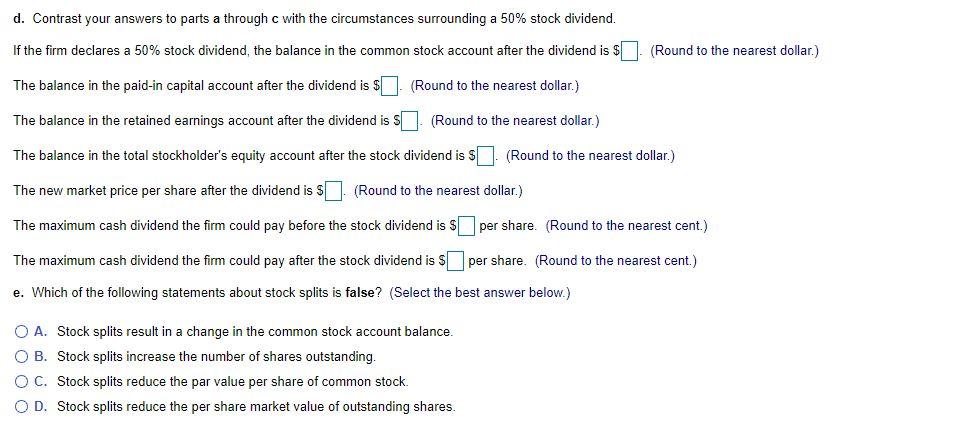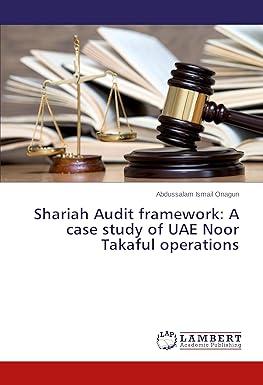


Stock split versus stock dividendFirm Mammoth Corporation is considering a 3-for-2 stock split. It currently has the stockholders' equity position shown. The current stock price is $120 per share. The most recent period's earnings available for common stock is included in retained earnings. Preferred stock Common stock (110,000 shares at $3 par) Paid-in capital in excess of par Retained earnings Total stockholders' equity $ 1,000,000 330.000 1,700,000 10.000.000 $13.030.000 a. What effect on Mammoth's equity account would result from the stock split? b. What change in stock price would you expect to result from the stock split? c. What is the maximum cash dividend per share that the firm could pay on common stock before and after the stock split? (Assume that legal capital includes all paid-in capital.) d. Contrast your answers to parts a through c. with the circumstances surrounding a 50% stock dividend. e. Explain the differences between stock splits and stock dividends. a. If the firm declares a 3-for-2 stock split, the new balance in the common stock account after the split is $. (Round to the nearest dollar.) The new balance in the paid-in capital in excess of par account after the stock split is $ (Round to the nearest dollar.) The new balance in the retained earnings account after the stock split is $ (Round to the nearest dollar.) The balance in the total stockholder's equity account after the split is s (Round to the nearest dollar.) b. The market price per share after the 3-for-2 stock split is $7. (Round to the nearest dollar.) c. The maximum cash dividend per share the firm could pay before the split is $ per share. (Round to the nearest cent.) The maximum cash dividend the firm could pay after the split is sper share. (Round to the nearest cent.) d. Contrast your answers to parts a through c with the circumstances surrounding a 50% stock dividend. If the firm declares a 50% stock dividend, the balance in the common stock account after the dividend is $ (Round to the nearest dollar.) The balance in the paid-in capital account after the dividend is $ (Round to the nearest dollar.) The balance in the retained earnings account after the dividend is SI (Round to the nearest dollar.) The balance in the total stockholder's equity account after the stock dividend is $[ (Round to the nearest dollar.) The new market price per share after the dividend is $. (Round to the nearest dollar.) The maximum cash dividend the firm could pay before the stock dividend is $per share. (Round to the nearest cent.) The maximum cash dividend the firm could pay after the stock dividend is $per share. (Round to the nearest cent.) e. Which of the following statements about stock splits is false? (Select the best answer below.) O A. Stock splits result in a change in the common stock account balance. OB. Stock splits increase the number of shares outstanding. O C. Stock splits reduce the par value per share of common stock. OD. Stock splits reduce the per share market value of outstanding shares. e. Which of the following statements about stock splits is false? (Select the best answer below.) O A. Stock splits result in a change in the common stock account balance. O B. Stock splits increase the number of shares outstanding. O C. Stock splits reduce the par value per share of common stock. OD. Stock splits reduce the per share market value of outstanding shares. Which of the following statements about stock dividends is false? (Select the best answer below.) O A. Stock dividends reduce the par value per share of common stock. O B. Stock dividends result in an increase to common stock and paid-in capital account and a corresponding decrease to retained earnings. OC. Stock dividends increase the number of shares outstanding OD. Stock dividends reduce the per share market value of outstanding shares









